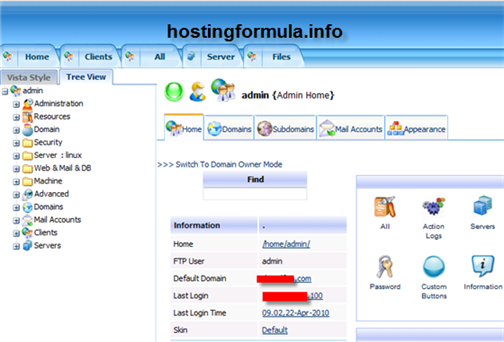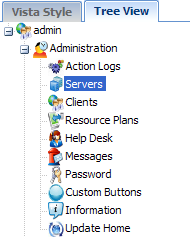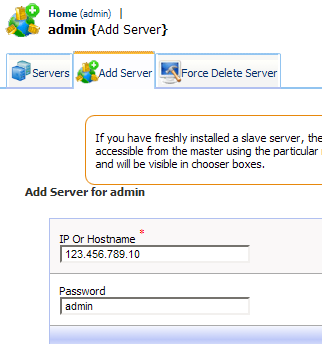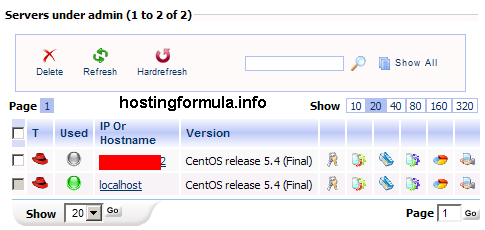I have job to transfer wordpress multi user to new host. The wpmu system currently host 400+ with subdomain type.
The old host and new host use same operating system FreeBSD dedicated server but with different version.
The procedure for move wpmu to new host not different than moving ordinary wordpress blog.
wordpress-mu.tar.gz 100% 402MB 13.9MB/s 00:03
#
4. Change dns setting
add wildcard to tinydns data file.
;; global options: printcmd
;; Got answer:
;; ->>HEADER<<- opcode: QUERY, status: NOERROR, id: 15165
;; flags: qr rd ra; QUERY: 1, ANSWER: 1, AUTHORITY: 0, ADDITIONAL: 0
;; QUESTION SECTION:
;batikweb.com. IN A
;; ANSWER SECTION:
batikweb.com. 8640 IN A 172.88.1.8
;; Query time: 0 msec
;; SERVER: 172.88.1.10#53(172.88.1.10)
;; WHEN: Tue May 11 09:59:31 2010
;; MSG SIZE rcvd: 48
#
Login to server 1.8
4. Move the file
Welcome to the MySQL monitor. Commands end with ; or \g.
Your MySQL connection id is 590411
Server version: 5.0.77-log FreeBSD port: mysql-server-5.0.77_1
Type ‘help;’ or ‘\h’ for help. Type ‘\c’ to clear the current input
statement.
mysql> create database wpmu;
Query OK, 1 row affected (0.01 sec)
mysql>
Grant all privileges
mysql> grant all privileges on wpmu.* to dtonet2@localhost identified by ‘dotnet22008′ with grant option;
Query OK, 0 rows affected (0.02 sec)
mysql> flush privileges;
Query OK, 0 rows affected (0.00 sec)
mysql>
Import database
mysql> exit
Bye
#
6. Import database
Syntax OK
Stopping apache22.
Waiting for PIDS: 793.
Performing sanity check on apache22 configuration:
Syntax OK
Starting apache22.
#
Check everything from browser and no problem so far.
Finish, mission accomplished.
wpmu cannot connect to database, wpmu coupon, wpmu transfer error, mu online experience formula, move wordpress mu to new, wpmu coupon code, tinydns answer section dnscache, change wp mu to another server, porting wordpress da hosting a hosting, transferring a wordpress mu site to a server, wordpress mu connect host, wordpress mu sql query, wordpress multi site change hosts, wpmu multi db grant, wpmu mysql assign user to blog, moving site from wp mu to wp on a new server, moving multiuser wordpress site cannot connect to database, dotnet mysql current connection id, how to migrate wordpress mu to another server, How to move wpmu to new host, how to transfer databases for wpmu to new host, how to transfer wordpress mu, idrive wordpress MU, migrating domain wordpress wpmu, migrating wordpress mu sql, move blogs between wordpress mu databases, move host wp mu, Move WPMU blog to new WPMU blog, moving a wordpress mu blog to new server, moving from wordpress mu, www batikweb com(Visited 165 times, 3 visits today)
The old host and new host use same operating system FreeBSD dedicated server but with different version.
The procedure for move wpmu to new host not different than moving ordinary wordpress blog.
Preparing and packing
1. Dumping mysql database# mysqldump -udtonet2 -pdotnet22008 dotnet2 > dotnet.sql2. Packing all files to one tarball
# tar cvzf wordpress-mu.tar.gz wordpress-mu3. Transfer the file to new host
# scp wordpress-mu.tar.gz erau@172.88.1.8:/home/erauPassword:
wordpress-mu.tar.gz 100% 402MB 13.9MB/s 00:03
#
4. Change dns setting
add wildcard to tinydns data file.
.batikweb.com:127.0.0.1:a:259200make file
.1.88.172.in-addr.arpa:127.0.0.1:a:259200
+batikweb.com:172.88.1.8:8640
+www.batikweb.com:172.88.1.8:8640
+*.batikweb.com:172.88.1.8:86400
@batikweb.com:172.88.1.11:mail.batikweb.com:10:86400
# makerestart dns
# svc -t /var/service/tinydns/check dns resolv
# svc -t /var/service/dnscache/
# dig batikweb.com; <<>> DiG 9.3.4-P1 <<>> batikweb.com
;; global options: printcmd
;; Got answer:
;; ->>HEADER<<- opcode: QUERY, status: NOERROR, id: 15165
;; flags: qr rd ra; QUERY: 1, ANSWER: 1, AUTHORITY: 0, ADDITIONAL: 0
;; QUESTION SECTION:
;batikweb.com. IN A
;; ANSWER SECTION:
batikweb.com. 8640 IN A 172.88.1.8
;; Query time: 0 msec
;; SERVER: 172.88.1.10#53(172.88.1.10)
;; WHEN: Tue May 11 09:59:31 2010
;; MSG SIZE rcvd: 48
#
Unpack and restoring
This steps taken in new host.Login to server 1.8
4. Move the file
# mv /home/erau/wordpress-mu.tar.gz /home/dotcomChange vhost
# cd /home/dotcom
# tar xvzf wordpress-mu.tar.gz
# ee /usr/local/etc/apache22/extra/httpd-vhosts.confadd these lines :
<VirtualHost 172.88.1.8 >5. Create database
ServerAdmin alam@hostingformula.net
DocumentRoot /home/dotcom/wordpress-mu
<Directory /home/dotcom/wordpress-mu >
AllowOverride FileInfo Options
</Directory>
ServerName batikweb.com
ServerAlias *.batikweb.com
</VirtualHost>
# mysql -ualam -pEnter password:
Welcome to the MySQL monitor. Commands end with ; or \g.
Your MySQL connection id is 590411
Server version: 5.0.77-log FreeBSD port: mysql-server-5.0.77_1
Type ‘help;’ or ‘\h’ for help. Type ‘\c’ to clear the current input
statement.
mysql> create database wpmu;
Query OK, 1 row affected (0.01 sec)
mysql>
Grant all privileges
mysql> grant all privileges on wpmu.* to dtonet2@localhost identified by ‘dotnet22008′ with grant option;
Query OK, 0 rows affected (0.02 sec)
mysql> flush privileges;
Query OK, 0 rows affected (0.00 sec)
mysql>
Import database
mysql> exit
Bye
#
6. Import database
# mysql -udtonet2 -pdotnet22008 wpmu < dotnet.sqlChange wp-edit.php to new host information.
#ee wp-config.php7. Restart Apache
Which iPad To Buy
Waterproof Case for Ipad
Keyboard for Ipad
# /usr/local/etc/rc.d/apache22 restartPerforming sanity check on apache22 configuration:
Syntax OK
Stopping apache22.
Waiting for PIDS: 793.
Performing sanity check on apache22 configuration:
Syntax OK
Starting apache22.
#
Check everything from browser and no problem so far.
Finish, mission accomplished.
wpmu cannot connect to database, wpmu coupon, wpmu transfer error, mu online experience formula, move wordpress mu to new, wpmu coupon code, tinydns answer section dnscache, change wp mu to another server, porting wordpress da hosting a hosting, transferring a wordpress mu site to a server, wordpress mu connect host, wordpress mu sql query, wordpress multi site change hosts, wpmu multi db grant, wpmu mysql assign user to blog, moving site from wp mu to wp on a new server, moving multiuser wordpress site cannot connect to database, dotnet mysql current connection id, how to migrate wordpress mu to another server, How to move wpmu to new host, how to transfer databases for wpmu to new host, how to transfer wordpress mu, idrive wordpress MU, migrating domain wordpress wpmu, migrating wordpress mu sql, move blogs between wordpress mu databases, move host wp mu, Move WPMU blog to new WPMU blog, moving a wordpress mu blog to new server, moving from wordpress mu, www batikweb com(Visited 165 times, 3 visits today)
 5:19 AM
5:19 AM
 Computer !
Computer !



































